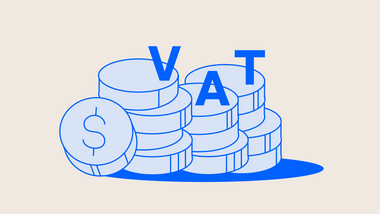How the Increase In National Insurance Contribution Rates Will Impact Your Business
After making it through the pandemic, how will the new Health and Social Care Levy (HSCL) affect your bottom line? Many small businesses will feel overwhelmed. But you can take control by understanding the immediate changes and preparing for the future consequences for your business.

The National Insurance (NI) will temporarily increase 1.25% from 6th April 2022. Small businesses set up in the UK face many pressures, and taxes are there to benefit everyone, right? The question is, after making it through the pandemic, how will the new Health and Social Care Levy (HSCL) affect your bottom line?
Take control by understanding the immediate changes.
Let's take a closer look at what the levy is.
What Is the Health & Social Care Levy?
The HSCL aims to raise £12.5 billion a year to pay for social care reforms and increase spending in England. It applies to employers, employees, and the self-employed, but small businesses will need to adapt more than anyone else.
Here are the current proposals:
- National Insurance (NI) will temporarily increase 1.25% from 6th April 2022.
Employees, employers, and the self-employed will all pay 1.25p more in the pound. For example, an employee earning £35,000 will be around £254 worse off per annum, and an employer will pay £923 more per annum for an employee earning £100,000.
- Income from share dividends will increase by 1.25% from 6th April 2022.
But what does that mean? The government estimates that, in 2022-23, basic rate taxpayers will pay an average of £150 more, and higher rate taxpayers will pay £403 extra on their dividend income.
- The HSCL will be a separate tax from 6th April 2023.
The levy will no longer be added to National Insurance and will be a line item on employee payslips. It will also apply to people over the state pension age who are still working.
How Will It Impact Small Businesses?
One critical change is what's been called the "double whammy" the HSCL reduces business profits and increases the employee's overall tax contribution.
So let's take a quick look at what this means:
- The cost of employing someone will rise 2.5% from 6th April 2022 (as employers and employees will both pay the 1.25% levy).
So you will need to forecast the impact of that 2.25% increase on your payroll costs from 6th April 2022. Then you can decide whether to absorb that cost, accept lower profits or focus on salary sacrifice schemes to reduce the impact of HSCL.
- The unexpected 1.25% rise in dividend tax will hit all dividends over the £2,000 tax-free allowance.
Limited company owners who get most of their income from dividends will take a direct hit. With the corporation tax increases from April 2023, small businesses will need to revise their budgets to account for the HSCL.
- You will need to support your payroll department.
There will be added pressure on employees and business owners who want to understand the impact of the HSCL, so make sure that you update your payroll software before April 2022.
The HSCL will immediately impact your profits and administrative burden, but you can get ahead of the changes. One way is to get personalised advice on fixing your cashflow with our experienced accountants in the UK on bookkeeping, accounting and optimising taxes.







